Toilet chopper pump: device, principle of operation and installation rules
The poor location of utilities can upset plans for creating a convenient layout. Everyone is accustomed to the fact that there are rules governing the distance from the sewer riser to the toilet and other plumbing fixtures. Therefore, the owners of the bathrooms had to put up with the current state of affairs.
Only after a special toilet pump appeared did it become possible to place equipment anywhere in the house. Agree, the device can be very useful, especially for rooms of non-standard shapes and dimensions.
Let's see what kind of miracle device it is, what is its design and principle of operation. In addition, we offer a detailed overview of different units, an algorithm for their selection and installation. Such information will be a godsend for those who are going to buy and install a toilet grinder.
The content of the article:
What is forced sewage
Standard internal sewer system private or apartment building is arranged by gravity. This means that the drains from the toilet and other plumbing fixtures, under the influence of gravity or by gravity, are sent to the sewer riser.
For the smooth operation of the system requires certain conditions: a correctly calculated distance from the toilet to the riser, the desired slope of the pipeline and more.
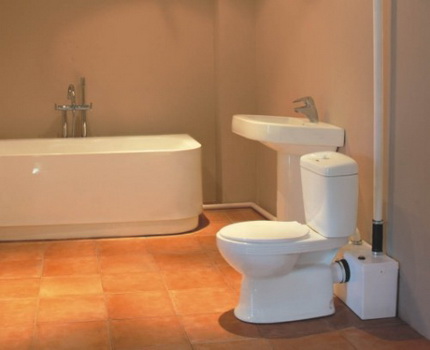
If they are violated, the flow rate slows down, and blockages appear. To prevent such a situation, forced sewage is used.For its arrangement, a pump is mounted in the system, the main function of which is the forced supply of effluents to the pipeline.
A pump with a grinder, it is sometimes called a sololift, in addition, it also grinds large inclusions present in the drains.
The device is compact, but it has a fairly high power. It is able to discharge effluents up to 5-7 m in the vertical direction and up to 100 m in the horizontal. The height of the wastewater rise is especially important when it is planned to equip a bathroom located below the sewage level.
The small size of the solift allows it to be placed behind the drain tank or even placed inside the latter.
Design and principle of operation of the pump with a grinder
A standard pump of this type is a system for pumping liquids enclosed in a plastic casing, equipped with blades for grinding large inclusions. The device must be connected to the sewerage and power supply systems.
The chopper is usually installed in the upper half of the pump housing. After the effluents enter the container with the blades, solid inclusions are retained here, and the liquid passes further.
Depending on the model of the device, two options are possible below. If the device is equipped with a float switch, the mass will accumulate to a certain volume. In other cases, the chopper will start immediately.
In any case, after the blades are activated, they begin to cut inclusions, turning them into a homogeneous mass, which the pump will push through to the sewer riser.
On sale you can find models where the chopper is located under the pump. We must admit that such devices work less efficiently, because, due to the design features of the blades, grinding of solid inclusions is not good enough.
When buying a device, this is worth considering. The pump must be equipped with a check valve, which prevents the return of wastewater.

Why do we need such a pump?
It must be admitted that the use of the pump allows you to solve the most complex issues in the arrangement of the sewer system. These include moving the toilet to almost any distance from the riser, installing plumbing in a room located below the sewage level, and much more.
The indisputable advantages of using pumps are:
- Effective prevention blockages in the sewer system. Due to the fact that the drains inside the pipes are pushed, rather than moving by gravity, they are not able to accumulate and form plugs.
- Possibility of using small diameter pipes for arranging the sewer system.
- Less water consumption from the drain tank.
- The ability to place plumbing equipment anywhere in the apartment.
In addition, pumps with grinders work almost silently, especially those models that use high-quality insulation. They do not create discomfort and do not interfere with rest at night.
There are certain inconveniences associated with the operation of devices. The devices are volatile, so they can only function if there is electricity, which may not always be possible in a country house, for example.
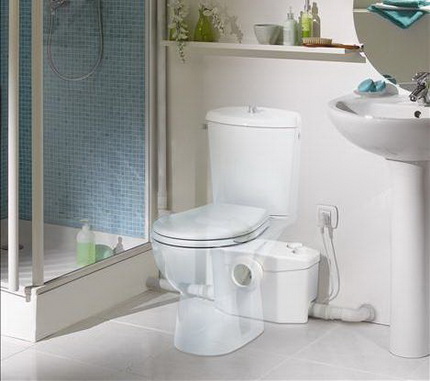
In addition, the pumps must be serviced regularly. Namely, to clean them. Depending on the model, you will have to do this manually or use special chemical solvents.
If this is not done, the device may become clogged, which will immediately affect its operation. However, there are self-cleaning models that do not need to be cleaned, but their cost is slightly higher.
Information about pumps for arranging forced sewage of a private house is presented in the articles:
- Sewage pumps: types, how to choose the right + operating features
- Domestic sewage pumping stations: types, design, installation examples
Types of equipment
The industry produces several varieties of toilet pumps. Each of them has a specific scope and features of operation. Let's consider devices in more detail.
Cold drains
Designed to work with liquids whose temperature does not exceed 40 ° C. It must be borne in mind that some items of equipment may become unusable from contact with hot drains.
Therefore, they can in no case be connected to the drain of the bathtub or shower. There are two varieties of such devices. One of them involves the presence of a chopper, the second - no.
The former can be used both for toilets and for combined connections, which may include a sink, bidet, toilet, etc. The second ones cannot be used for working with toilets.
Moreover, when using them, it is necessary to monitor the drains so that large inclusions do not get into the pump. For the installation of devices, special adapter couplings are used, which are also sensitive to high temperatures.
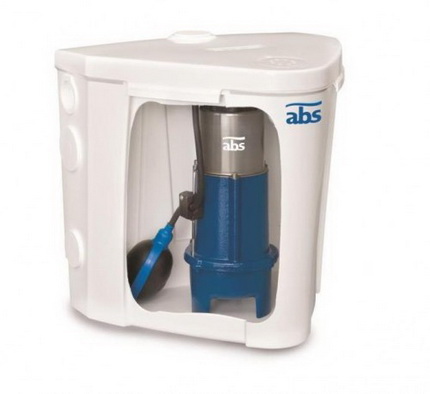
Devices for hot drains
The equipment can function normally, pumping effluents, the temperature of which does not exceed 90 ° С. However, this value may vary depending on the purpose and model of the device. It should be clarified in the technical documentation of the device. Such pumps are designed to work with a wide variety of household appliances.
Those that can pump not very hot liquids are used when connecting a bath or shower.
More expensive appliances that can withstand temperatures up to 90 ° C can work with a washing machine or dishwasher.Like machines for cold drains, these pumps can be with or without a grinder.
The first option is used to equip a complex connection of a toilet bowl, bathtub, washing machine, etc. The second can only be used if there is no toilet in the number of connected devices.
Pumps with grinders for hot drains are somewhat different from their "cold" counterparts. Their cutting parts are more durable and designed to grind even fairly hard and small-sized inclusions.
The design features of these devices are such that objects that are not amenable to cutting settle to the bottom of the grinder mesh and are there until the next cleaning of the device, without affecting its operation at all.
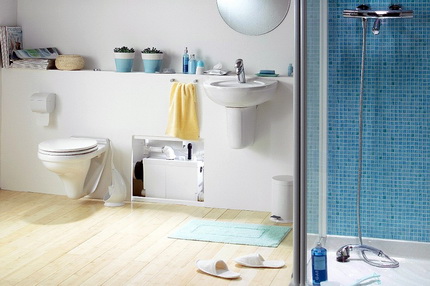
Compact Type Devices
For small bathrooms and toilets, shredders for a compact toilet are ideal. These devices are similar to standard pumps, differ from them only in small sizes.
The width of the casing of such devices rarely exceeds 12 cm, which makes it possible to install it behind a decorative panel or in a small niche directly to the installation on which the toilet will be fixed.
Toilet bowl with integrated pump: plumbing novelty
Relatively recently, unusual plumbing equipment appeared on the market, which is a toilet with an integrated grinder and pump. The equipment can be distinguished from standard analogues in appearance - it does not have a drain tank.
The device simply does not need this part, since the toilet is connected directly to the water supply and when you press the drain button, water is supplied directly from the main.
At the same time, the chopper is also activated. True, for the correct operation of the device requires a certain water pressure level. The minimum value is 1.7 atm.
The equipment is equipped with additional sewer leads, which allows you to connect several more plumbing fixtures to it: a sink, bidet, washing machine or bathtub.
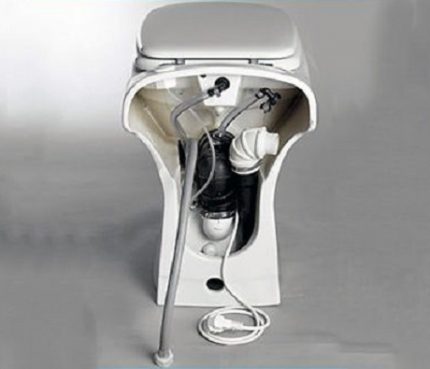
The toilet with a grinder has many advantages:
- It is connected directly to the water supply.
- The built-in drainage mechanism makes it unnecessary to have a familiar tank.
- Effective drainage up to 30 m in the horizontal direction and up to 3 m in the vertical.
- Its compact size makes it ideal for small spaces.
- Productivity of the device makes 85 l / min.
- Additional insulation allows the equipment to operate almost silently.
- Sophisticated maintenance is not required.
- The device is more reliable and safe than a standard toilet with a connected chopper.
- Full compliance with Russian and European sanitary standards.
The device is very reliable and efficient. Its main drawback today is the high cost, which is due to the fact that the manufacturer is just starting to produce such equipment.

Important characteristics of grinder pumps
On sale you can find a fairly wide range of pumps with grinders for toilets. Their differences are quite significant, so before buying a device you need to know its purpose and determine the conditions in which it will work. Otherwise, the money will be wasted.
As practice shows, with the right choice of device, the following characteristics must be taken into account.
Fecal Pump Power
The manufacturer indicates it in the technical documentation attached to each device. Expressed in meters, shows the distance over which the device can move drains. Usually two indicators are indicated: height and distance of movement.
On average, the device can raise drains up by 10 m and advance in the horizontal direction by 100 m. You need to understand that these are the maximum possible indicators.
Therefore, if they exactly match the required operating parameters, it is better to choose equipment with a "margin". After all, if he has to constantly work at maximum power, any even short-term additional load will put him out of order.
In addition, the continuous operation "at the limit of possibilities" will significantly reduce the life of the equipment.
Another nuance. It must be understood that the indicators indicated in the technical documentation are mutually exclusive in some way. This means that if the pump has to raise the drains up to the maximum height, then it will not be able to advance them to the distance indicated in the passport.
Practice shows that, on average, each meter of wastewater rise reduces the range of their transportation in the horizontal direction by about 10 m.
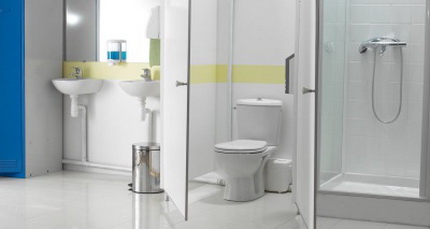
Number of possible connections
The manufacturer produces various models of devices. Some of them are designed to work with only one sanitary fixture, in this case a toilet, the rest can be attributed to combined equipment.
They can connect to multiple devices. This is true for bathrooms, in which several appliances at once need forced sewage.
In this case, it is optimal to purchase a pump with a grinder, install it on the toilet and connect the rest of the equipment to it. Choosing such a model, it is important that the pump is equipped with a sufficient number of outputs for connection, and that its power is sufficient to service all devices.
If there are many plumbing devices, it may be possible to install two pumps correctly.
Waste disposal frequency
There are two modifications of pumps with grinders for toilets. The first option is equipped with a float switch. In this case, the chopper knives are started only after a certain amount of solid waste has been accumulated. Thus, the device first collects drains.
The second type of device activates the chopper after each press of the drain button.
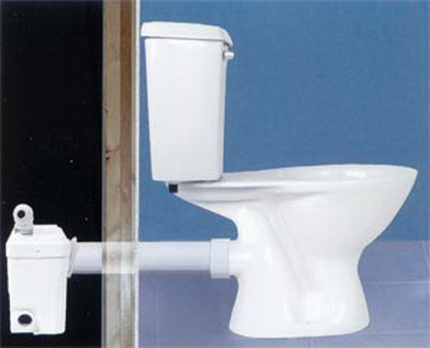
In addition to the above characteristics of the equipment, when choosing, it is necessary to pay attention to the dimensions of the sewer pipe.If they do not match the cross-section of the pump inlets, you will need to additionally purchase a special adapter.
In addition, it is important to choose the right system performance and decide on type of toilet. The last important point is the temperature of the effluents, on which the type of pump depends.
Which brands are worth a closer look?
Equipped with grinders, fecal pumps for toilets are produced by different manufacturers. According to consumer reviews, the products of such companies are reliable: German Grundfosfrench Sfa and Chinese Jemix.
SFA Brand appeared in the middle of the last century and became widely known thanks to the production of high-quality pumping equipment. The manufacturer offers a wide range of household appliances.
Among them are both grinder pumps and combined devices designed for simultaneous operation with several plumbing fixtures: bathtub, sink, shower, etc.
The company produces a large number of compact models designed for installation in a drain tank. Cases of devices are made of high-strength plastic, which significantly extends the period of their use.
The models are distinguished by a thoughtful design and compactness, so they are excellent for installation in confined spaces.
Grundfos appliances easy to install and operate. Their additional advantage is the low noise level that the devices emit during operation.
JEMIX Company for pressure drainage from toilets and other plumbing fixtures, produces a line of pumps called STP.
It includes six models with different technical characteristics, among which there are combined devices and one toilet with an integrated grinder. All devices have a sufficiently high power and can be used for both horizontal and vertical movement of wastewater.

Sewage pump connection procedure
Before starting installation, determine the place where the device will be installed. There are some rules here. First of all, it is strictly forbidden to place the pump below floor level.
The equipment should be located directly near the toilet, at a distance of no further than 0.4 m. It is necessary to provide free access to the device so that it is possible to carry out maintenance and repair work without difficulty.
Make sure once again that the diameters of the sewer pipe and the pump inlet are the same. If not, an adapter is purchased. In addition, the pump outlet must be check valve installed.
If it does not exist, an extremely unpleasant situation is not excluded, when drains from the sewer pour into the toilet. The non-return valve can be included in the package of the pump, if not, it is necessary to purchase.
Before installation, you should carefully read the instructions that must be included with the device. It is optimal for it to be in Russian. The document describes in detail the installation process of the selected model.
In addition, all necessary diagrams and illustrations are always attached to the instructions. Once again, check the equipment, make sure that all the parts and fasteners necessary for installation are present.
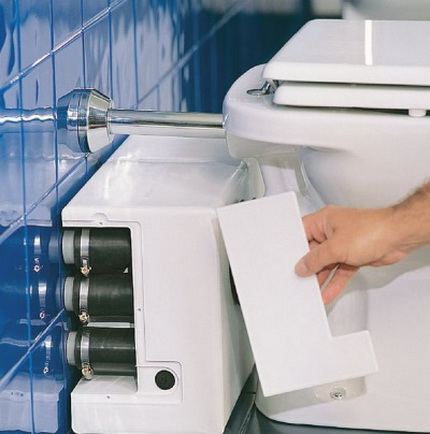
After the preparation for installation is completed, you can proceed with the installation procedure. It is carried out as follows.
Step number 1. First, we insert inlet pipes or connecting elbows into all pump inlets. We make sure that the highway approaches the device at a slope of 3 cm per linear meter.This will allow gravity drains to move to the device, which is necessary for its normal operation.
If there are more entrances than is required at the moment, we put plugs of suitable size on the “non-working” openings.
Step number 2. We install the pump in a pre-selected and prepared place. We find special cast ears under the fasteners on the product’s case, insert screws into them and fix the pump to the floor. We proceed to laying the pipeline from the pump to the sewer riser.
It is optimal that the pipes go straight, turns should be avoided or, if this is not possible, make them as flat as possible. If there are joints between the pipes, brazed, welded or adhesive joints are made. Their quality should be high so that subsequently there is no leak.
If the pump will have to raise the effluents and it is planned to equip a vertically standing outlet, it should be at a distance of no more than 0.3 m from the outlet of the device. Only in this case the device will be able to function normally.
Step number 3. By connecting the pipe coming out of the toilet with the pump - for fixing the elements we use corrugation. In this case, it is necessary to equip the docking so that the inlet pipe of the pump is lower than the outlet pipe from the toilet. In addition, the necessary slope for the drain pipe should be provided so that the drains move by gravity.
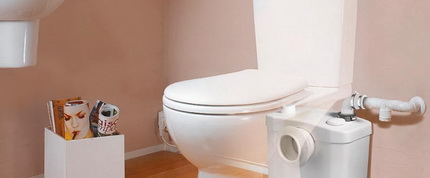
Step number 4. Arrangement of ventilation. This procedure is necessary for models without a carbon filter, the design of which provides for a special ventilation outlet. The pipe should be led above the ridge on the roof of the house.
If it seems that this is too troublesome, it is worth choosing a model with a replaceable carbon filter that will trap all unpleasant odors. But in this case, the cartridge will have to be changed regularly.
Step number 5. Power must be supplied to the pump. For models with a plug, you will need to install an individual outlet, the cable to which is laid from the RCD and the shield. If the device does not have a plug, the connection is made directly from the mains through a 30 mA RCD circuit breaker.
After that, you can conduct a test run of the device. During the procedure, you should carefully inspect the articulations of the elements for leaks, eliminate the problems, if any.
Conclusions and useful video on the topic
Pump chopper for concealed installation:
Golden installation rules and varieties of pumps SFA choppers:
Sewage pump GRUNDFOS SOLOLIFT2:
Pumps with toilet shredders are practical and highly efficient equipment. Their use allows you to install plumbing fixtures at any distance from the sewer riser and even lower them into the basement floors, where they will be below the level of the sewer line.
In order for the device to work without interruptions, it is important to correctly calculate its power and correctly install the device.
Anyone interested in the matter of choosing, installing and operating a toilet grinder, we offer to leave comments and ask questions. The contact form is located in the lower block.

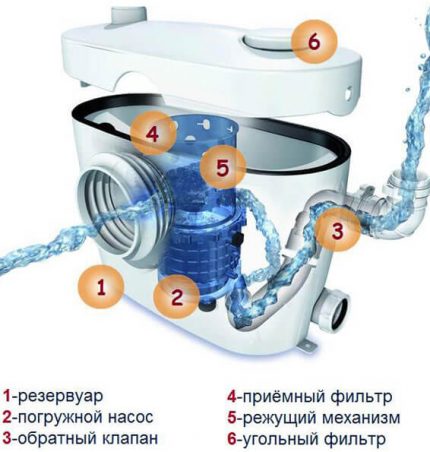
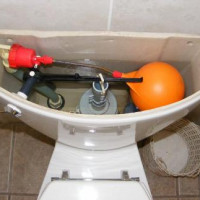 Flush mechanism for the toilet: device, principle of operation, an overview of various designs
Flush mechanism for the toilet: device, principle of operation, an overview of various designs 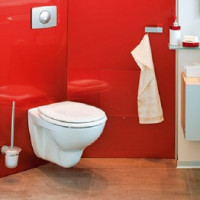 Corner installation for a toilet: selection tips and installation rules
Corner installation for a toilet: selection tips and installation rules 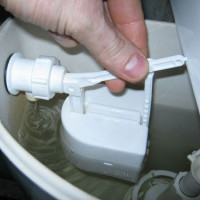 Toilet float: device, adjustment rules and replacement example
Toilet float: device, adjustment rules and replacement example 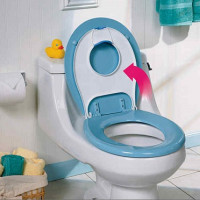 Seat toilet seat: types, selection rules and installation features
Seat toilet seat: types, selection rules and installation features 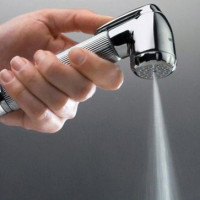 Hygienic shower for the toilet: a comparative overview of the designs and the nuances of the installation
Hygienic shower for the toilet: a comparative overview of the designs and the nuances of the installation 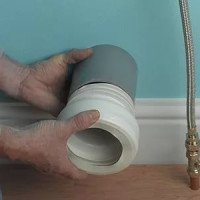 Rubber cuff for a toilet bowl (cam): rules of installation and connection
Rubber cuff for a toilet bowl (cam): rules of installation and connection  How much does it cost to connect gas to a private house: the price of organizing gas supply
How much does it cost to connect gas to a private house: the price of organizing gas supply  The best washing machines with dryer: model rating and customer tips
The best washing machines with dryer: model rating and customer tips  What is the color temperature of light and the nuances of choosing the temperature of the lamps to suit your needs
What is the color temperature of light and the nuances of choosing the temperature of the lamps to suit your needs  Replacement of a geyser in an apartment: replacement paperwork + basic norms and requirements
Replacement of a geyser in an apartment: replacement paperwork + basic norms and requirements
I can not imagine in which cases such an aggregate may be needed. It is better to immediately make a normal sewer than to escape in this way, this is a more reliable and durable option. And in order to avoid blockages, it is not necessary to throw in the toilet something that is not intended for this. And then some individuals put plush toys and old rags in there, no chopper will protect from fools.
Honestly, I agree with the previous commentator, since the extra costs for the purchase and installation of such a grinder pump are useless. Self-flowing systems, when built correctly, have been running smoothly for years. But maybe I'm just stupid and the degree of progress that has befallen us does not reach me = D
And what about the basement? An example from my life - I went to a rocking chair in a basement (it was organized and still exists in the 80s), there was no toilet and sink because I couldn’t lift water up - for some reason, the infection was flowing down. The owner bought a solift and organized a normal bathroom, is already thinking about a shower.
And also redevelopment of apartments - where I wanted the kitchen there and put (or a bathroom). And for other industrial, commercial or office buildings, it is possible to organize toilets anywhere, without relying on gravity. In short, a good thing, you have to take it.
P.S. I’m thinking at my dacha (I’ve already taken buildings with a building, but without a bath) to put a transport bath, and so as not to dig holes, buy a solift and make a drain to an outdoor toilet.
Today, organizing a bathroom in the basement is not an impossible task, if such a need arose. Of course, the arrangement and laying of communications with subsequent installation will be slightly different.
The problem itself is that the sewer line is above the level of the basement, so the tap will not work under its own weight. For such cases, systems for forced pumping of sewage have been developed. If there is a toilet and shower in one room, it is best to mount a separate pumping system (I enclose the scheme). For the gym, where there will be a constant flow of customers and a large flow of water, this is true.
It is best to mount a spare intermediate drive, in case the volume of drains increases sharply. For the toilet, solofit is the optimal solution, here I agree, or other pumping stations designed for drains with solid inclusions.
Where to buy a toilet bowl complete with a grinder without a float? Tell me the online store, please.
This is not a matter of the store, but of the manufacturer. Only SFA now produces such toilets, called SANICOMPACT. Prices from 23 thousand.